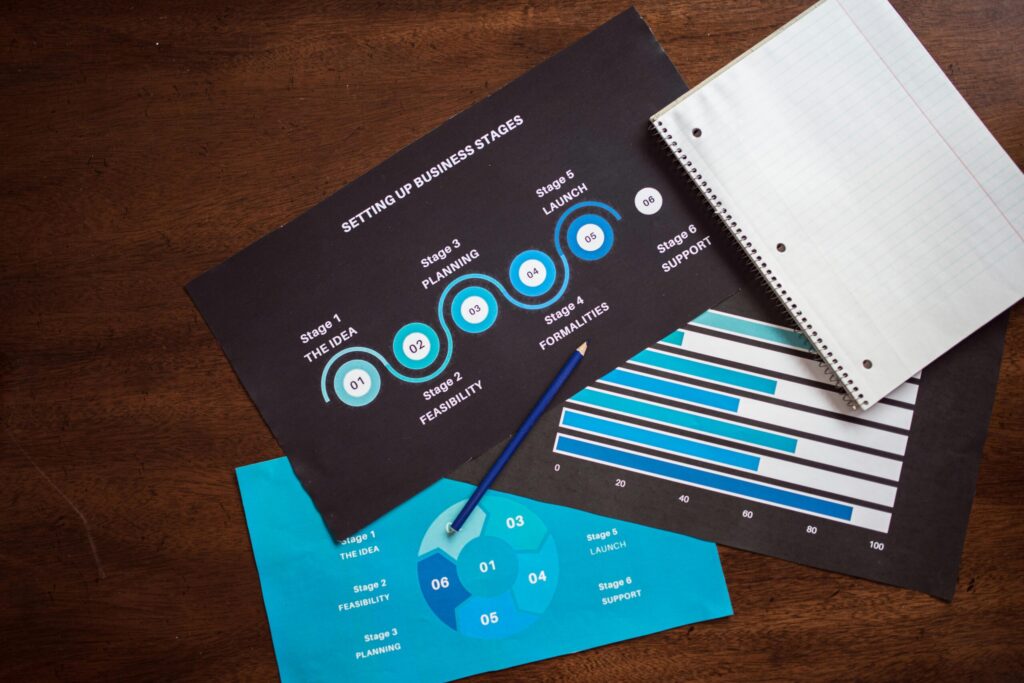before you hit that ‘buy’ button, it’s important to know how to analyze bank stocks the right way. if you have ever wondered whether investing in bank stocks is a smart move you are not alone. Banks are the backbone of any economy, and their stocks play a key role in long-term portfolios.
Why Bank Stocks Are Different
Before you dive into ratios and reports, understand that bank stocks don’t behave like other companies.
They earn money mainly from interest, not from selling goods or services.
Quick Visual:
| Factor | Regular Company | Bank |
|---|---|---|
| Income Source | Product or service sales | Interest income |
| Assets | Physical assets | Loans & deposits |
| Risk | Market & competition | Credit & liquidity |
| Regulation | Moderate | Very high (RBI/central bank) |
Tip: Banks succeed when the economy is strong and borrowers repay loans regularly.
Analyze bank stocks step-by-step

Step 1: Understand the Bank’s Business Model
Every bank has a different focus. Some lend to retail customers, others to big corporations, and some deal in investments or international finance.
Understanding their model gives you a clear picture of their profit drivers.
- Retail banks focus on home loans, personal loans, and deposits.
- Corporate banks lend to large companies.
- Public sector banks are government-controlled and stable but grow slowly.
- Private banks are faster, more efficient, and often more profitable.
- Investment banks manage IPOs, trading, and advisory work.
💡 Tip: Compare banks that are similar. Don’t compare SBI (a public bank) with HDFC (a private bank). Their structures, risk levels, and growth models are totally different.
Step 2: Learn How Banks Earn and Spend Money
Banks earn mainly from interest income and fee-based income.
They borrow money at a lower rate (from depositors) and lend it at a higher rate (to borrowers).
The difference between what they earn and what they pay is called Net Interest Margin (NIM) — one of the most important metrics for a bank.
Net Interest Margin (NIM)
Formula: (Interest Earned – Interest Paid) ÷ Average Earning Assets
Ideal Range: 3% – 4%
Higher NIM means the bank is managing its lending efficiently. Private banks usually maintain better NIMs because of better technology and risk systems.
Step 3: Check Asset Quality (NPAs)
Not every loan is repaid. Some customers default, these are called Non-Performing Assets (NPAs).
A high NPA ratio means the bank’s loan book is risky.
What to Watch:
- Gross NPA: Total bad loans as a percentage of total advances
- Net NPA: Gross NPA minus provisions already made
- Provision Coverage Ratio (PCR): The percentage of NPA losses covered
Ideal values:
- Gross NPA below 2%
- PCR above 70%
If the NPAs are falling year after year, that’s a good sign. It means the bank is cleaning up its bad loans.
Step 4: Look at the Capital Adequacy Ratio (CAR)
CAR shows whether the bank has enough capital to absorb potential losses.
Formula: (Tier 1 Capital + Tier 2 Capital) ÷ Risk-Weighted Assets
A higher CAR means more safety.
As per RBI rules, Indian banks should have at least 11.5%, but good banks maintain above 15%.
This ratio ensures the bank won’t collapse during financial shocks.
Step 5: Study the CASA Ratio
CASA stands for Current Account + Savings Account deposits. These are low-cost funds that help banks earn more profits.
If a bank has a high CASA ratio, it means it gets money cheaply from its customers instead of relying on costly borrowing.
Ideal CASA: Above 40% is considered excellent.
Private banks like HDFC and Kotak maintain CASA above this level, giving them an edge in profitability.
Step 6: Measure Profitability – ROA and ROE
Return on Assets (ROA)
Tells how well a bank uses its assets to generate profits.
Good ROA: Above 1%.
Return on Equity (ROE)
Shows how efficiently the bank uses shareholder money.
Good ROE: 12%–15%.
If both ROA and ROE are strong, the management is doing a great job balancing growth and safety.
Step 7: Look at Loan and Deposit Growth
A growing loan book means more lending opportunities.
A growing deposit base shows customer trust.
But they must grow together.
If loans grow too fast while deposits are flat, it can cause liquidity problems.
The ideal situation is when both loans and deposits rise steadily, reflecting balanced growth.
Step 8: Compare with Competitors (Selective Table)
| Bank | NIM (%) | NPA (%) | CASA (%) | ROE (%) | CAR (%) |
| HDFC Bank | 4.1 | 1.2 | 45 | 16 | 18 |
| ICICI Bank | 3.8 | 2.5 | 44 | 15 | 16 |
| Axis Bank | 3.7 | 2.1 | 43 | 13 | 15 |
| SBI | 3.1 | 2.5 | 42 | 12 | 14 |
You can see how HDFC leads with higher efficiency and safety margins.
Step 9: Evaluate Management and Governance
Numbers tell only half the story. The rest depends on people.
Good management ensures:
- Transparent communication
- Consistent lending discipline
- Innovation in digital banking
- Avoidance of bad governance
When a bank faces frequent leadership changes or fraud cases, it’s a red flag.
Example: HDFC Bank maintained decades of consistent growth under strong management teams.
Step 10: Check Digital and Technological Strength

Modern banks are more like tech companies with banking licenses.
The digital revolution is changing how banks operate.
Banks with better technology enjoy:
- Lower costs
- Faster loan processing
- Higher customer satisfaction
Look for features like:
- AI-based credit scoring
- Online onboarding
- Fintech partnerships
- Advanced mobile apps
Step 11: Interest Rates and Economic Factors
Bank performance moves directly with interest rate changes.
When rates rise, banks earn more on loans (good for profits).
When rates fall, loan demand increases (good for volume). But too much rise can hurt borrowers, increasing NPAs. So balance matters. Also watch macro factors like GDP, inflation, and RBI policies.
A healthy economy = strong banks.
Step 12: Valuation Ratios
Even the best bank is a bad buy at the wrong price.
Check these valuation ratios before investing:
- Price to Book Value (P/B): Compares market price to book value.
- <1 → undervalued, >3 → possibly expensive
- Price to Earnings (P/E): Compares stock price to earnings per share.
- Lower than peers is better (for similar quality)
- Dividend Yield: Measures income return.
- 2–4% = stable bank with regular payouts
Always compare these metrics with similar banks before deciding.
Step 13: Fundamental vs Technical Bank Stock Analyze

Many investors confuse these two — but both are useful when used correctly.
Fundamental analysis looks at business quality.
Technical analysis studies stock price behavior.
Here’s how they differ 👇
| Aspect | Fundamental Analysis | Technical Analysis |
| Focus | Financial health & ratios | Price movement & patterns |
| Time frame | Long-term | Short-term |
| Tools used | Balance sheet, P&L, reports | Charts, RSI, moving averages |
| Best for | Investors | Traders |
| Goal | Find what to buy | Find when to buy |
In simple words, use fundamentals to pick the right bank, and technicals to find the right entry or exit point.
Step 14: Quick Checklist Before You Invest
- Understand the bank type and model
- Check NIM, NPA, CAR, CASA, ROE, ROA
- Compare with competitors
- Evaluate management quality
- Review digital performance
- Check valuation ratios
- Follow RBI & economic updates
- Study both fundamentals and technicals
This checklist will save you from impulsive buying and help you focus on quality banks.
Step 15: Red Flags You Must Avoid
Stay away if you notice:
- Rapid loan growth without matching deposits
- Rising NPAs quarter after quarter
- Declining ROE or NIM
- Poor management history
- Frequent penalties from regulators
One or two issues might be normal — but a combination means danger.
Step 16: Example – HDFC Bank
Let’s take an example to bring all of this together.
HDFC Bank is one of India’s strongest banks. Here’s what its numbers show (approx values):
- NIM: 4.1% (high efficiency)
- NPA: 1.2% (very low)
- CASA: 45% (excellent low-cost funds)
- ROE: 16% (strong returns)
- CAR: 18% (safe capital)
- Digital users: 30% YoY growth
Verdict: High quality, consistent performer, and a good long-term pick.
Step 17: Tools You Can Use
You don’t need to be a finance expert to analyze banks.
Here are some trusted tools you can use:
- Screener.in – Best for ratio-based filters
- Moneycontrol – For results, charts, and peer comparison
- Ticker by Finology – For deep insights
- RBI Official Data – For authentic information
Combine these tools for a complete view before buying.
Step 18: Should You Invest in Bank Stocks?
Yes, but choose wisely.
Banking is the backbone of every economy. If you pick the right banks, your portfolio can grow steadily for years.
Choose banks that:
- Have clean loan books
- Maintain high CASA
- Deliver consistent ROE and ROA
- Embrace digital transformation
Avoid banks that:
- Grow too fast without safety
- Hide bad loans
- Depend too much on risky lending sectors
patience pays off here.
Bank stocks reward consistent long-term investors more than short-term traders.
FAQs – How to Analyze Bank Stocks
NIM and NPA are the most important because they reflect profit and risk.
Above 15% ensures a cushion during market stress.
Yes, but returns are slower. Private banks usually perform better over time.
Yes, it indicates consistency and shareholder friendliness.
Conclusion
Analyzing bank stocks may sound complicated, but once you understand a few key ratios, it becomes simple.
Remember this flow:
- Start with fundamentals (NIM, NPA, CASA, ROE, ROA)
- Evaluate safety (CAR, PCR)
- Study growth (loan and deposit trends)
- Compare peers and valuations
- Watch digital transformation
If the fundamentals are strong and the management is transparent, the stock will reward you over time.
In 2025, focus on digitally strong, well-capitalized, and efficiently managed banks.
That’s where the smart money is going and that’s where long-term investors will win.

